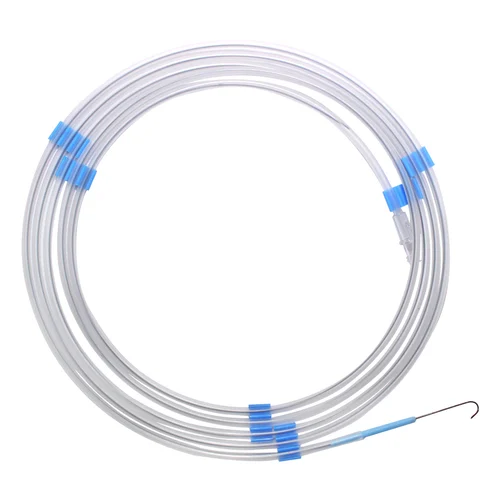The Introduction of Micro Guidewire
These guidewires are technical wonders made of stainless steel or nitinol. Their slender form helps them navigate even the most difficult anatomical passageways, and their size reduces vascular damage. This results in more efficient surgeries, more comfortable patients, and quicker recovery periods.
Components of Micro Guidewire
Despite their tiny size, micro guidewires depend on a potent mix of parts to work. Here’s a glimpse into these wonders of medical ingenuity:
- Core Wire: Think of the core as the skeleton of the guidewire. The structure is supported by this very thin and flexible wire, which is frequently constructed of the shape-memory metal nitinol. Its modest diameter reduces vessel damage during navigation.
- Coil: The coil is arranged logically around the core wire. This helical form gives flexibility, allowing the guidewire to bend and traverse through the body’s complex circulatory network.
- Tip: The tip is the intersection of purpose and accuracy. The tip, which comes in a variety of forms (such as floppy or J-curve), is essential for guiding small vessels and steering the guidewire to the intended location inside the body.
Applications of Micro Guidewire
Micro guidewires are crucial in various medical fields:
- Neurosurgery: Imagine negotiating the complex web of blood vessels in the brain. Micro guidewires provide a method for delivering stents and catheters to specific parts of the brain, enabling less invasive treatment of aneurysms, stroke blockages, and other neurological disorders.
- Cardiology: These guidewires are effective in clogged coronary arteries. Cardiologists can accurately position catheters for angioplasty operations, restoring blood flow and strengthening the heart.
- Interventional Radiology: These guidewires make difficult vascular locations in the body accessible, enabling procedures like creating dialysis access, treating peripheral artery disease, and tumor embolization.
Design Considerations for Guidewires
The creation of guidewires involves striking the ideal balance. Here are the main factors that influence these small wonders:
- Material Selection: Materials must be biocompatible. Guidewires are often made of materials like stainless steel or nitinol, which appear clearly under X-ray and fluoroscopy.
- Flexibility: Guidewires must be flexible enough to follow the body’s contours without kinking or breaking. This is achieved through the design of the core wire, often including coils for added mobility.
- Visibility: Using radiopaque materials and carefully positioned markers along the wire’s length, medical professionals can follow the movement of the wire with fluoroscopy and X-rays, ensuring accurate navigation.
The Micro Guidewire Manufacturing Process
Transforming raw materials into tiny instruments involves a meticulous process:
- Wire Drawing: The journey starts with wire drawing. The micro core is made of extremely thin wires that are refined and stretched from raw materials like stainless steel or nitinol.
- Coil Winding: A miniature coil is carefully wrapped around the core wire, providing the guidewire with essential flexibility.
- Tip Formation: The final stage involves shaping the tip to meet specific needs using processes like grinding or laser cutting.
Tiny Guidewires: Challenges and Innovations
Despite their capabilities, micro guidewires face several challenges. Here’s how they push boundaries and overcome obstacles:
- Miniaturization: The goal is to make the guidewire small enough to navigate delicate vessels without compromising strength and functionality.
- Navigation: Guidewires must thread through complex vascular networks and confined spaces, requiring extraordinary control and dexterity.
- Safety: Reducing the risk of vessel damage or perforation is crucial. Innovations continuously improve the shape of the tip, smooth surfaces, and material biocompatibility.
The Future of Micro Guidewires
The future holds many exciting possibilities for micro guidewires:
- Integration of Nanotechnology: Nanotechnology promises further miniaturization and accuracy during operations.
- Smart Guidewires: Integrating sensors could provide real-time location, pressure, and temperature data, enhancing precision in guidance.
